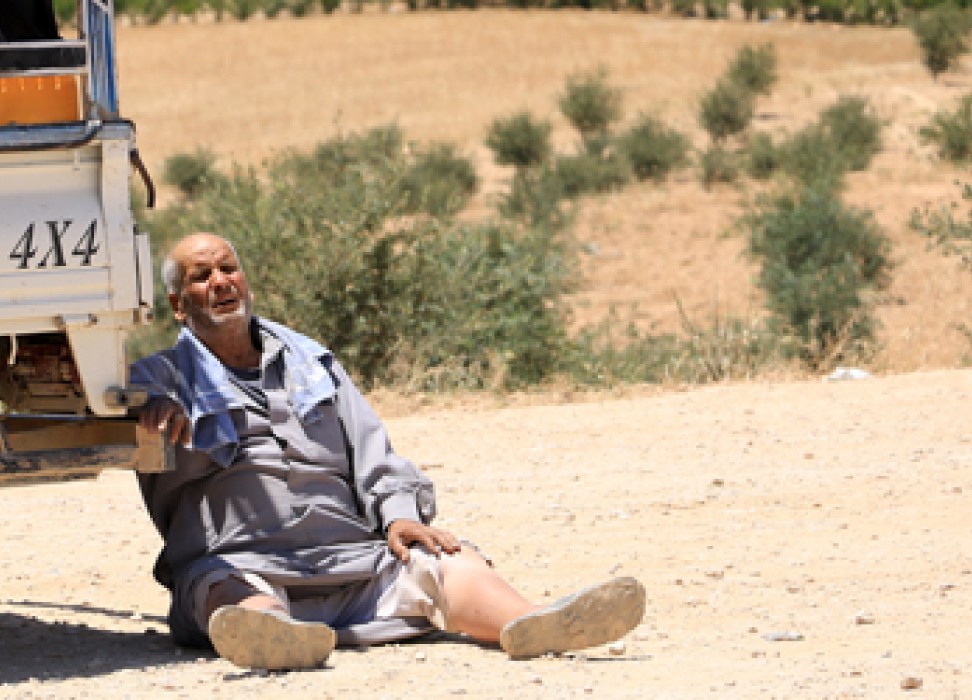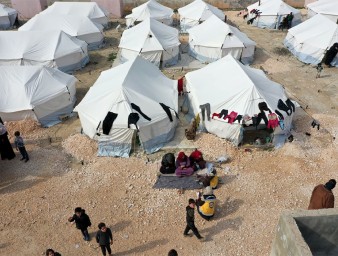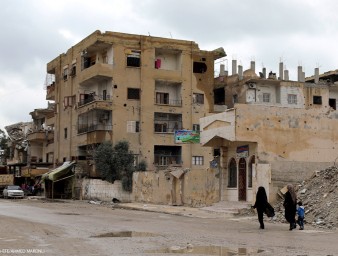At least 200,000 civilians trapped in three Syrian towns
15 July 2016

The UN Human Rights Chief rang the alarm Friday about the increasingly desperate situation of at least 200,000 civilians trapped in three towns in Syria where attacking forces have been making significant headway in recent weeks.
On 7 July, Government forces and their supporters took control of Castello Road, the only known remaining route in and out of opposition-controlled areas of the city of Aleppo. Working in tandem with Kurdish groups, the attacking forces have gained control of much of the road, placing them in close proximity to opposition-controlled areas of the city, which are now cut off from the outside world.
As airstrikes escalated in recent months, a total of 10,000 to 30,000 are believed to have fled the area between January and June. Airstrikes by Government and allied forces have also increased in western rural Aleppo areas, and on 10 July at least 19 civilians (including two women and 11 children) were killed in Ibeen town, and another seven civilians in Shantra town.
“Accurate figures are extremely hard to establish,” said UN High Commissioner for Human Rights, Zeid Ra’ad Al Hussein. “However, we believe there are at least 150,000 civilians who are now effectively totally trapped in the opposition-held part of Aleppo. We are deeply worried about what will happen to them as the fighting closes in and intensifies, while their already minimal supplies of food, water and medicine run out.”
“Meanwhile, as Government forces and their supporters have advanced on the opposition-held eastern parts of the city, armed opposition groups have escalated their shelling of government-held areas of Aleppo, further endangering the remaining civilian population there,” Zeid said, citing a number of Government-held residential areas that were hit on 8 and 9 July, including the Shahba Roz restaurant area, al-Midan, al-Furqan, and al-Qasr al-Baladi building, killing at least 44 civilians, many of them women and children, and injuring hundreds of others.
The High Commissioner also expressed alarm about the desperate situation of the thousands of civilians who have been trapped in the strategically located town of Darayya, in Western Ghouta, an area close to Damascus that has been under siege by Government forces and their allies since 2012.
“Advancing forces recently captured several areas in southern and western parts of Darayya, squeezing the remaining 8,000 civilians into an even narrower space of around one square kilometre of devastated urban ruins,” Zeid said. “They have no electricity, virtually no water and even less access to food than before.”
The UN Human Rights Chief expressed serious concern about the impact of more airstrikes and ground fighting on an increasingly closely packed civilian population, as well as what would happen to them if Darayya falls to the encircling forces.
While many towns and cities in Syria are still under siege, and experiencing continuous or sporadic fighting, the third town that the High Commissioner singled out as being of particular concern is Manbij in the eastern rural area of Aleppo Governorate. The situation there is also believed to be deteriorating dramatically as fighting continues between ISIL and the Syrian Democratic Forces (SDF) which is being supported by airstrikes.
Approximately 70,000 civilians, are believed to be trapped in Manbij, with the town itself and surrounding areas subjected to near-daily airstrikes and ground strikes since early June. The SDF is reported to have made significant gains and is moving closer to capturing the town, which has been under ISIL control since January 2014.
“We understand the civilians in Manbij are in a dire position as they are trapped between the warring parties,” Zeid said, adding that his staff had received reports of serious violations taking place in Manbij, including civilians being killed and injured by airstrikes and ground strikes, as well as by landmines laid by ISIL.
“Civilians have also reportedly been killed if they leave their homes or attempt to flee,” Zeid said. “We don’t know precisely how many civilians have been killed since the current campaign began, but we believe the number is in the dozens at least, and includes many women and children. Families are unable to access local cemeteries to bury their relatives who have died or been killed, and are burying them in their gardens or keeping the corpses in bunkers. The town has no electricity or water at present, and no medical facilities are known to be operating. As the SDF closes in on the city, ISIL has not permitted civilians to leave the area.”
The High Commissioner urged all the forces advancing on Aleppo, Darayya and Manbij, as well as those fighting in other parts of Syria, despite declared truces, to take great care not to harm the many hundreds of thousands of civilians trapped in the conflict zones.
“The country is already a gigantic, devastated graveyard,” he said. “The number of war crimes already committed surpasses the worst nightmares. But it is in the power of both attacking and defending forces – and their foreign backers – to minimize further civilian casualties and avoid further crimes and atrocities. They must do so."
"They must also ensure that the fundamental needs of the besieged population such as food and water are met," Zeid said. "The intentional starvation of civilians is a serious violation of international human rights and humanitarian law, and may constitute a war crime. Those responsible for such violations should be held criminally accountable. Even if they have become so brutalized they do not care about the innocent women, children and men’s whose lives are in their hands, they should bear in mind that one day there will be a reckoning for all these crimes.”
15 July 2016



